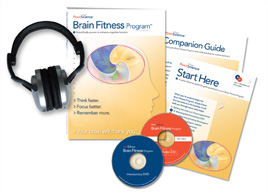

#Posit science brain gym how to#
2 We also use Belly Breathing in teaching students how to access vocal strength and expression for reading and phrasing. We use Belly Breathing as a way to release stress, increase relaxation, and sustain focus of attention. It seems this deep breathing can activate the vagus nerve and result in a relaxation response from the parasympathetic nervous system allowing the body to heal, repair and restore.īelly Breathing is one of the 26 Brain Gym activities included in our “Midline Movements” category. Abdominal breathing usually needs to be learned and done with intention: Purposely empty your lungs of air, then, as you inhale, inflate the abdominal cavity (the belly) in a 3-D way, allowing it to expand without effort. Breathing centered in the chest, with chest and lungs expanding, is the most common kind of breathing however, the expansion is often restricted by muscular tension around the ribs and abdomen, providing less airflow and more rapid respiration. Clavicular breathing uses the shoulders and clavicle to move the air, and is automatically called on most often when people feel stressed, panicked or are struggling for breath. Let’s consider three habits of breathing: clavicular breathing, chest (thoracic) breathing, and belly (abdominal) breathing. Andrew Weil 1, a pioneer in the field of integrative medicine, believes that breathing is so crucial to the body’s ability to heal and sustain itself that he says, “If I had to limit my advice on healthier living to just one tip, it would be simply to learn how to breathe correctly.” Given that, it’s the quality of these respiratory movements that determines how pleasurable and beneficial breathing is to our wellbeing. Our rate of respiration shifts with our emotional state: while we might take about 6 slow, deep breaths per minute when we’re relaxed and at rest breathing becomes fast and shallow with as many as 16 per minute when we’re frightened or anxious.

It is said that humans can live for 40 or more days without food and perhaps as many as 4 without water. However, without oxygen to the brain, we cannot survive more than about 4 minutes. Our breathing provides a continuous rhythmic exchange between our lungs and the ocean of air that surrounds us. Everyone can benefit from the relaxation possible with a few minutes of Belly Breathing.


 0 kommentar(er)
0 kommentar(er)
